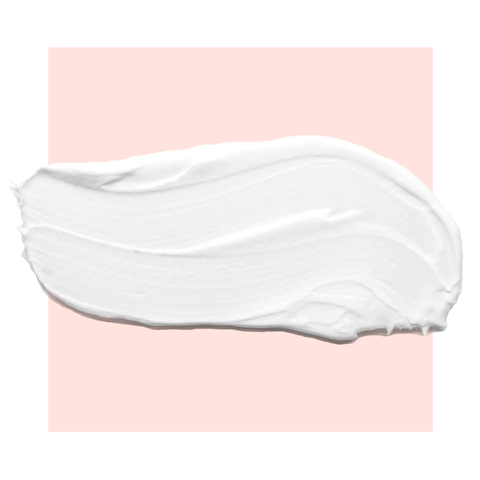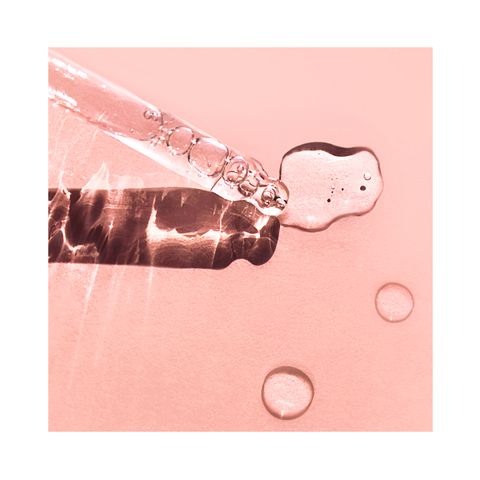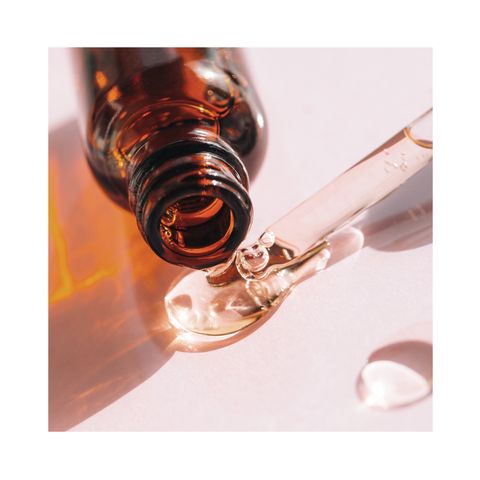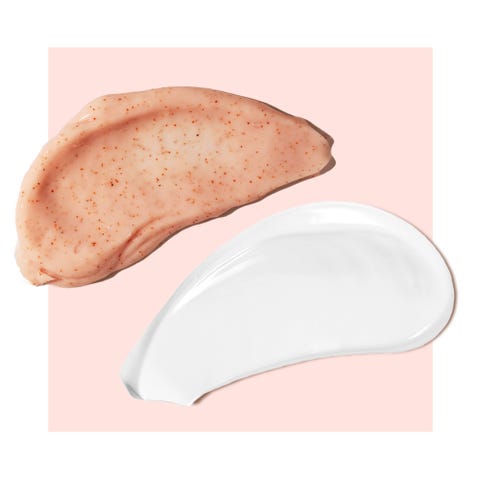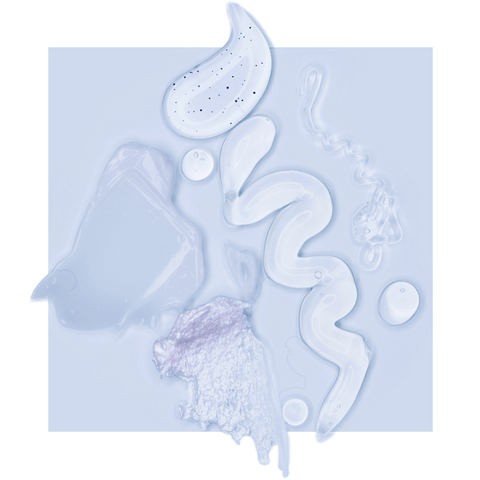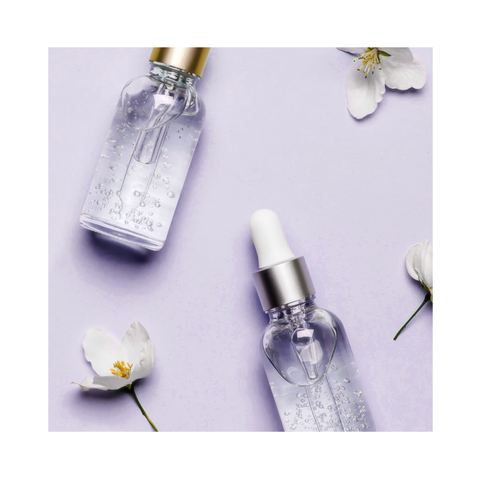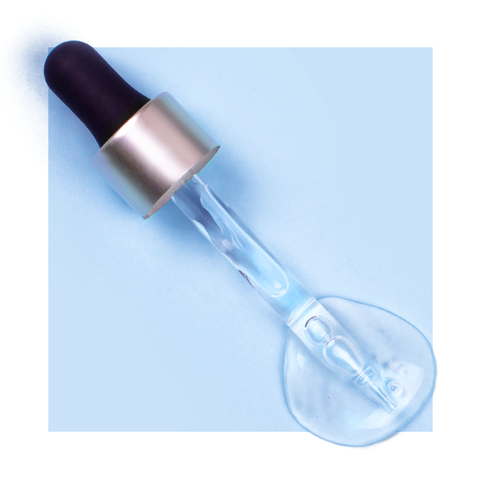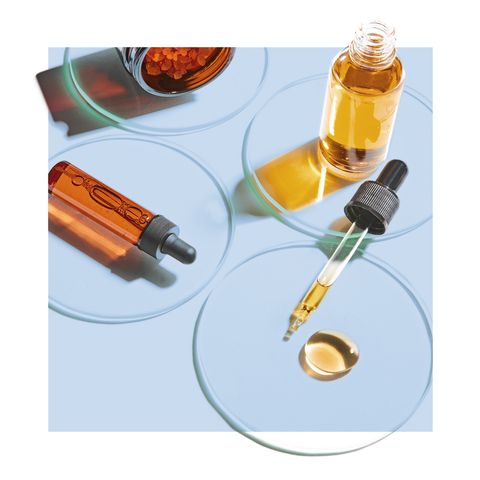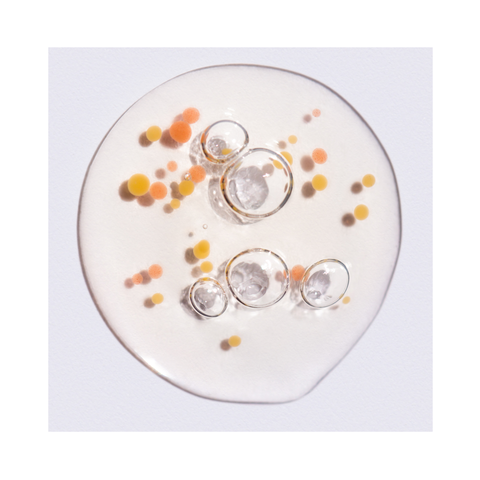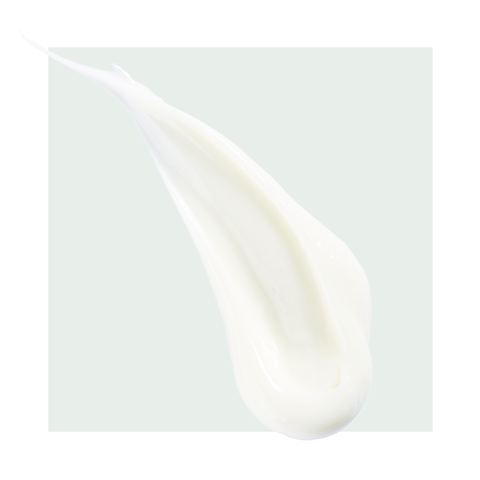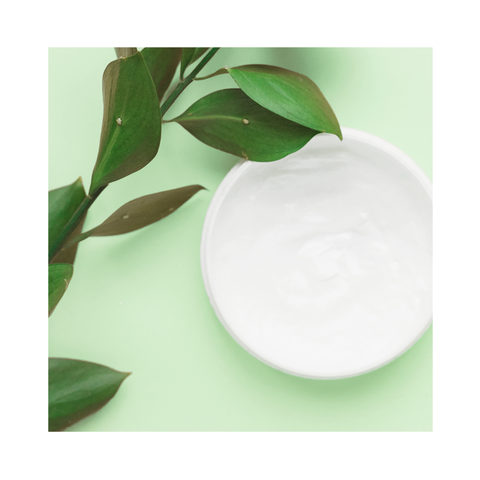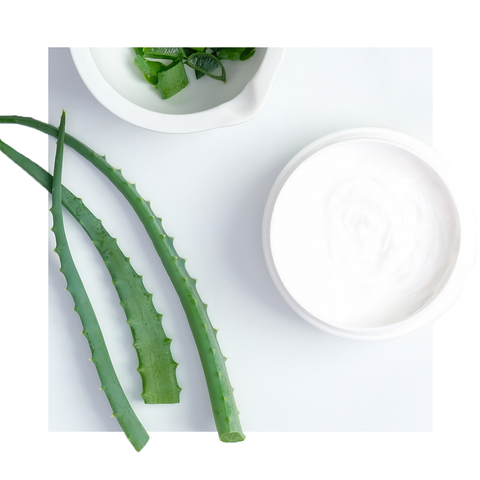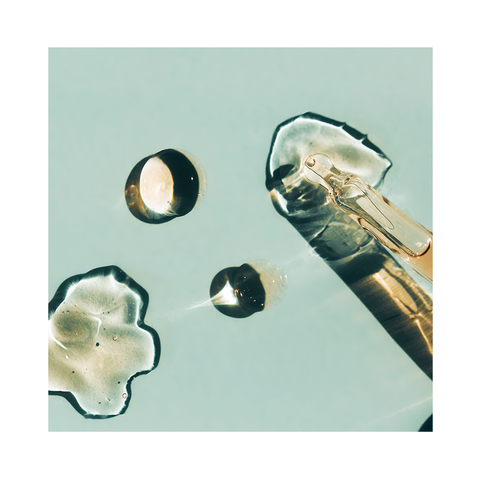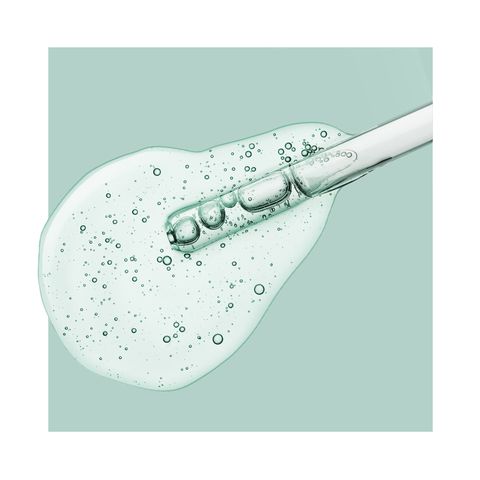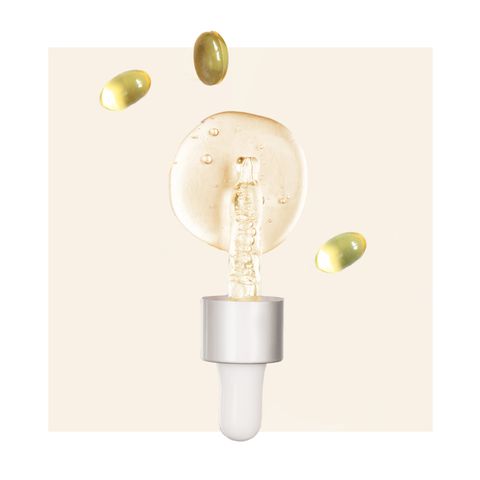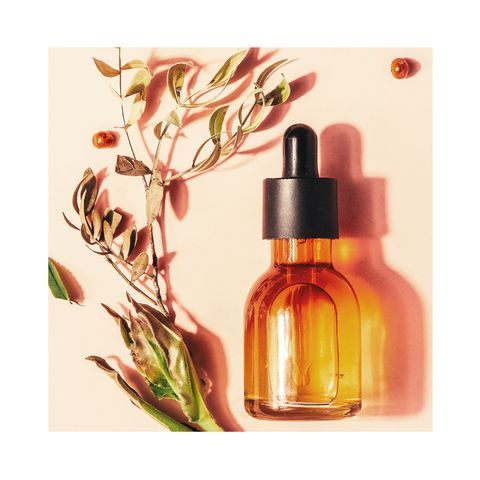Table of Contents:
Acne-Fighters + Exfoliators | Anti-Agers | Hydrators + Skin Soothers | Skin Oils
When it comes to skincare, it seems like the number of serum, face cream and oil offerings (and claims) on store shelves are ever-growing — because they are. In 2019, skincare brought in nearly $5.9 billion in sales and outpaced makeup growth by 12%, according to the NPD Group, a market research company. And according to Google Trends, searches for “skincare” reached an all-time high in 2020, still maintaining record-breaking popularity today.
The skincare boom has understandably brought an onslaught of new ingredients, each sounding better than the next (and some sounding downright insane). In a fast-changing world of vampire facials and snail mucin face masks, the question is: Which ingredients are actually worth the hype, and which will work for your lifestyle, your skin type and your skincare goals?
To demystify the endless catalog, we consulted our Good Housekeeping Institute Beauty Lab chemists and scientists and over 25 top dermatologists from New York City to San Francisco, Miami and back again. Of the best and buzziest, we’ve broken down exactly what you need to know, including the ingredients that play nice together (and which ones don’t), the best actives for staving off acne, anti-aging must-haves to brighten and resurface skin, soothing, hydrating fixes for sensitive skin and go-to products for every skin type.
Through the peaks and valleys of skincare trends, these are the tried-and-true ingredients that have stood the test of time and are worth adding to your skincare regimen, plus how to use them:
Acne-Fighters + Exfoliators
If you struggle with persistent acne or have oily skin, these clarifying ingredients are for you. They help to mattify shine, degunk pores and slough away dead skin and bacteria for a clearer, brighter complexion that’s free of whiteheads, blackheads and the rest. Start slow with these powerful ingredients and avoid using in tandem off the bat.
Azelaic Acid
What it does: Produced by a naturally occurring yeast on skin, this exfoliating ingredient reduces hyperpigmentation, fades dark spots, and kills acne- and rosacea-causing bacteria.
Who it’s for: All skin types, but particularly acne-prone skin.
How to use it: Twice a day (morning and night) or once every other day for sensitive skin.
FYI: Start slow — azelaic acid may cause drying or peeling on application sites.
READ MORE
Beta-Hydroxy Acids (BHAs)
What it does: BHAs are oil-soluble acids that plunge deep into pores to target oil glands and decrease oil secretion
Who it’s for: Acne-prone and oily skin, since it decreases oil secretion and nixes dead skin to prevent pimples.
How to use it: Begin with twice-weekly use at a low concentration, and increase potency and frequency as tolerated.
FYI: While it’s a star on oily skin, it may cause flaking at first, particularly on dry or sensitive skin.
READ MORE
Polyhydroxy Acid
What it does: A gentle chemical exfoliant, polyhydroxy acid (PHA) sloughs dead skin cells away from the surface for a smoother and more even texture.
Who it’s for: Milder, less irritating and more hydrating than exfoliant cousins AHA and BHA, PHA doesn’t penetrate skin as deeply but still exfoliates which makes it perfect for sensitive skin, rosacea or eczema.
How to use it: PHA plays nicely with other active ingredients like vitamin C or retinol — start slow at first to prevent irritation. Most people can use PHAs three to four times a week without issue. One exception: Use once weekly if you use other acids like AHAs or BHAs.
FYI: The most common PHAs are gluconolactone, galactose and lactobionic acid.
READ MORE
Salicylic Acid
What it does: A BHA best known for its exfoliating, pore-cleaning, and bacteria-fighting powers.
Who it’s for: People with oily and acne-prone skin, particularly those who want to treat and prevent whiteheads and blackheads.
How to use it: Apply as a spot treatment or swap in a salicylic acid-laced face cleanser once or twice per week, increasing frequency as tolerated.
FYI: This acne-fighting powerhouse may irritate sensitive skin or parch dry skin.
READ MORE
Anti-Agers
These heavy-hitting ingredients smooth out wrinkles and fine lines by ramping up collagen production and cellular turnover for youthful, bright-looking, even-toned skin. Since skin will be freshly exfoliated, it may feel irritated at first: Start slow, avoid using alongside other exfoliants and always follow up with SPF!
Alpha-hydroxy acids (AHAs)
What it does: AHAs are water-soluble acids derived from fruits or sugar cane that exfoliate dull, dry skin and stimulate collagen production to lessen wrinkles.
Who it’s for: Anyone whose main concern is anti-aging, or those with dry skin.
How to use it: Start with a lower concentration and work up to daily use, as tolerated.
FYI: AHAs increase skin’s sensitivity to UV rays, so use SPF every day. AHAs also may cause superficial chemical burns on darker skin tones.
READ MORE
Bakuchiol
What it does: This ancient botanical seed is a gentler, effective alternative to retinol. It’s anti-inflammatory, anti-microbial, and increases collagen production, and reduces the appearance of fine lines, wrinkles, and hyperpigmentation.
Who it’s for: Safe for all skin types and those concerned with anti-aging, but particularly great for skin types that cannot tolerate retinol (e.g. sensitive skin, rosacea).
How to use it: Safe for use once to twice daily, morning or night.
FYI: Any new ingredient can cause a reaction. Start slowly and work your way up to daily use.
READ MORE
Glycolic Acid
What it does: An AHA that minimizes pores, fights acne, and speeds up cell turnover for fresher, clearer, younger-looking skin.
Who it’s for: All skin types, though sensitive or dry skin types should use formulas with 5% concentration, max.
How to use it: Apply daily to oily and acne-prone skin at concentrations up to 10% in serums, toners, peels, and cleansers.
FYI: May cause irritation on dry or sensitive skin, or superficial burns at concentrations over 10%.
READ MORE
Peptides
What they do: Made of amino acids, peptides stimulate skin to make more collagen to decrease fine lines and wrinkles.
Who they’re for: Anyone looking to increase skin firmness, smooth out fine lines or wrinkles and quell inflammation.
How to use them: Peptides work well with other skincare ingredients, making them easy to incorporate into your existing skincare routine once to twice daily. Opt for products that stay on the skin for an extended period, like a moisturizer or serum.
FYI: Look for ingredients that end with “peptide” or begin with “palmitoyl” on the ingredient label.
READ MORE
Retinol
What it does: A fat-soluble derivative of vitamin A, retinol is the reliable OTC anti-aging ingredient. It prevents collagen degeneration, encourages skin cell turnover, and strengthens skin against wrinkle formation.
Who it’s for: Safe for all skin types, but best for mature skin types or anyone who wants to prevent signs of aging.
How to use it: Use once daily before bed, alternating nights of application and increasing frequency to nightly, once skin adjusts.
FYI: Retinol can be irritating and cause redness, dryness, peeling at first: Don’t use alongside any chemical exfoliants or acids. Since it increases sun sensitivity, use SPF every day.
READ MORE
Vitamin C
What it does: This potent antioxidan helps brighten skin and fade hyperpigmentation by blocking melanin production, fights free radical damage from environmental stressors and boosts collagen production, reducing signs of aging.
Who it’s for: Any skin type, especially skin that’s hyperpigmented, dull or UV-damaged.
How to use it: Apply in a leave-on treatment like a serum or cream in the a.m., before SPF. Start slowly once a day at a lower concentration and increase to twice a day as tolerated. To avoid irritation, steer clear of pairing vitamin C with retinol or exfoliating ingredients like AHAs.
FYI: Look for an opaque or dark-colored, airtight container and ingredients like vitamin E and ferulic acid to improve stability and efficacy. Too much vitamin C can irritate skin; stick to a potency of 10% to 20%.
READ MORE
Vitamin E
What it does: Both an antioxidant and an anti-inflammatory, vitamin E prevents skin discoloration, protects against damage and signs of aging caused by free radicals and staves off acne breakouts.
Who it’s for: Products formulated with vitamin E work well for most skin types, but it’s particularly helpful for acne-prone, discolored or aging skin.
How to use it: Drier skin types can apply pure vitamin E oil directly to the skin once to twice daily. Combination and oily skin types may want to opt for a product that’s formulated with the ingredient.
FYI: Vitamin E pops up as “tocopherol” on some ingredient labels. If you have oily skin, don’t use straight vitamin E oil on its own as it might exacerbate clogged pores.
READ MORE
Hydrators + Skin Soothers
If your skin is dry, sensitive, prone to redness, or plagued by eczema, these calming, nourishing hydrators will be your saviors. Use them alone and/or immediately following any exfoliation regimen (above!).
Ceramides
What it does: This type of naturally-occurring fat holds skin cells together to help form a waterproof seal and healthy skin barrier that keeps skin hydrated.
Who it’s for: Everyone, but particularly those with mature skin and eczema-prone, irritated, or dry, itchy skin.
How to use it: Apply daily in a lotion or cream alone or following retinoids, hydroxyacids, and exfoliants to stave off potential irritation.
FYI: Ceramides are naturally-occurring, but deplete with age and poor skin health. Luckily, OTC ceramides are bio-identical to what skin naturally produces.
READ MORE
Cica
What it does: Centella asiatica (a.k.a. cica) is an herb rich in anti-inflammatories that calms redness and irritation, regulates collagen synthesis, and protects against environmental damage.
Who it’s for: Everyone, but particularly those who struggle with acne, rosacea, or severe dryness and sensitivity.
How to use it: Apply a cica-packed cream or serum to clean skin nightly, when skin is in repair mode.
FYI: Check the ingredients list — cica, tiger grass, centella asiatica, or madecassoside should be near the top.
READ MORE
Humectants
What it does: Humectants are water-loving ingredients that draw moisture into skin to help increase moisture content over time.
Who it’s for: Any skin type (even oily skin requires some hydration!), but especially essential for dry skin.
How to use it: Humectants like glycerin, hylauronic acid, aloe, and urea are most often formulated in moisturizers and creams alongside occlusives and emollients. Apply once to twice daily.
FYI: Since humecants draw moisture from anywhere, they might increase skin dryness if you live in a very dry environment by absorbing water from the skin instead of the air.
READ MORE
Hyaluronic Acid (HA)
What it does: A naturally-produced sugar molecule found in our skin, joints, and connective tissue, this gentle humectant attracts up to 1,000 times its weight in water to hydrate, smooth, and plump dry or wrinkled skin.
Who it’s for: All skin types (allergic reactions are rare since it’s naturally occurring), but particularly helpful for dry or mature skin in need of deep hydration.
How to use it: Most often found in products that are left on the skin (e.g. creams, lotions, serums, masks), HA can be used twice daily even on sensitive skin.
FYI: Skin produces less natural HA with age, which contributes to sallowness and wrinkles. Check skincare labels for mention of “sodium hyaluronate.”
READ MORE
Niacinamide
What it does: This water-soluble derivative of niacin or vitamin B3 (an essential vitamin not produced by the body) is lauded its anti-inflammatory, soothing, brightening, and skin tone-evening benefits.
Who it’s for: All skin types; it can help reduce sebum production on oily skin, retain moisture on dry skin, and foster ceramide production to repair skin compromised by rosacea or eczema.
How to use it: It’s typically formulated into leave-on products like serums and creams and best used twice per day.
Caution: The way niacinamide works in the skin is not fully understood, but several studies have shown clinical skincare benefits.
READ MORE
Occlusives
What it does: These moisturizing agents form a protective layer on skin’s surface to prevent moisture loss and shield skin from external irritants like friction, cold, wind and pollen.
Who it’s for: Thick and heavy, occlusives are best for people for dry, dehydrated, sensitive or reactive skin.
How to use it: Alongside humectants, occlusives are present in most hydrating skincare products, from lip balm to moisturizer. They’re safe to use on dry skin multiple times daily.
FYI: Petrolatum, silicones, shea butter and beeswax are all occlusives. Occlusives are likely too rich for those with oily skin and since they contain mainly oil-based ingredients, they may leave skin with a sheen.
READ MORE
Polyglutamic Acid
What it does: A natural polymer and humectant, polyglutamic acid (PGA) is a super hydrator that attracts up to 5,000 times its weight in water to hydrate skin and make it look and feel more plump with reduced fine lines and wrinkles.
Who it’s for: PGA is gentle and hydrating so it’s universally beneficial for a hydration boost as needed on all skin types and all environments for a dewy look.
How to use it: It can be added into any skincare routine and doesn’t interfere with products like vitamin C, retinol or niacinimide. Those with dry skin can use it multiple times daily, while those with oilier skin types (or who live in a humid climate) may want to apply more sparingly.
FYI: For best results, look for polyglutamic acid in the top half of ingredients on products that are left on skin rather than rinsed off.
READ MORE
Skin Oils
Face oils are the cherry on top of any skincare regimen, and there’s one out there for every type of skin. Use them solo, mix them into a moisturizer, or press them onto skin as the last step of your nighttime routine for glowing, nourished skin.
Castor Oil
What it does: Pressed from seeds of the plant ricinus communis, castor oil is loaded with emollient fatty acids that hydrate and make flaky skin feel softer, as well as ricinoleic acid, a potent antioxidant that protects the skin from free radicals that cause collagen loss and wrinkles.
Who it’s for: All skin types, but particularly beneficial for dry or mature skin. Castor oil is also great for thinning or sparse eyebrows and eyelashes by helping to condition and thicken hairs.
How to use it: Apply to clean, dry skin one to two times per day as needed. Apply sparingly on brows or lashes, taking care to avoid contact with eyes.
FYI: Castor oil is commonly diluted in a carrier oil for skincare. Applying straight castor oil may lead to skin irritation, inflammation, and dryness.
READ MORE
Jojoba Oil
What it does: Produced from the seeds of the simmondsia chinensis (jojoba) plant, jojoba oil is a lightweight yet hydrating oil to soften and hydrate skin, diminish the appearance of wrinkles, and reduce inflammation.
Who it’s for: Jojoba mimics our skin’s natural oils, so it’s well-tolerated by all skin types. Its composition is similar to skin’s natural sebum, so it won’t clog pores yet is deeply hydrating.
How to use it: For dry skin, press jojoba oil into skin up to twice per day right after cleansing. If you have oily skin, try using it every other day or mixed in with a moisturizer.
FYI: Though rare, it does have the potential to cause some side effects such as a rash or allergic reaction.
READ MORE
Rosehip Oil
What it does: Harvested from the seeds of rose bushes, rosehip oil is packed with anti-inflammatory fatty acids and vitamins A and C which smooth, firm, and brighten skin and fade scars, hyperpigmentation, and stretch marks.
Who it’s for: Well-tolerated by most skin types, but great for anyone looking to fade scars, boost glow, and firm skin.
How to use it: Start small by patting a few drops on cleansed skin at bedtime. Work up to rubbing on to clean, damp skin both mornings and evenings.
FYI: Allergies to rosehip oil are rare, but any new ingredient can potentially trigger a reaction. Apply a test patch to your jawline first and let sit 24 hours.
READ MORE
Squalane Oil
What it does: The hydrogenated, shelf-stable version of squalene (a lipid naturally produced by our oil glands) closely mimics the natural molecule to hydrate, repair, and protect the skin’s barrier.
Who it’s for: All types of skin, but particularly for soothing dry skin and eczema, but it’s also oily skin-friendly since it’s lightweight, non-greasy, and unlikely to clog pores.
How to use it: Twice a day, after cleansing and applying serum, apply a few drops of squalane oil to the face and follow with moisturizer.
FYI: Traditionally, squalene is sourced from sharks’ livers, though many brands have shifted to plant-based sources like rice bran, wheat germ, and sugar cane.
READ MORE
Our experts:
- Birnur Aral, Ph.D., director of the Good Housekeeping Institute Beauty Lab.
- Charlotte Birnbaum, M.D., board-certified dermatologist at Spring Street Dermatology in New York City.
- Dhaval G. Bhanusali, M.D., dermatologist, researcher, and laser surgeon based in New York City.
- Cheryl M. Burgess, M.D., F.A.A.D., dermatologist at Center for Dermatology and Dermatologic Surgery in Washington, D.C.
- Brendan Camp, M.D., double board-certified dermatologist and dermatopathologist at Medical Dermatology & Cosmetic Surgery in New York City.
- Caren Campbell, M.D., San Francisco-based dermatologist.
- Stacy Chimento, M.D., dermatologist at Riverchase Dermatology in Miami Beach, Florida.
- Loretta Ciraldo, M.D., F.A.A.D., board-certified dermatologist and co-founder of Dr. Loretta Skincare.
- Roberta Del Campo, M.D., a dermatologist in North Miami, Florida.
- Jeanine Downie, M.D., F.A.A.D., director at Image Dermatology PC in Montclair, NJ.
- Alan Durkin, M.D., board-certified plastic surgeon in Vero Beach, Florida affiliated with BABOR.
- Paul Jarrod Frank, M.D., cosmetic dermatologist and Chief Medical Officer and founder of PFRANKMD.
- Mona Gohara, M.D., dermatologist and associate clinical professor at Yale School of Medicine in New Haven, CT.
- Gary Goldenberg, M.D., medical director of Mount Sinai Dermatology Faculty Practice
- Elizabeth K. Hale, M.D., board certified dermatologist and clinical associate professor of dermatology at the New York University Langone Medical Center.
- Flora Kim, M.D., board-certified dermatologist in Dallas
- Hadley King, M.D., board-certified dermatologist in NYC.
- Craig A. Kraffert, M.D., board certified dermatologist and president of Amarte Skin Care.
- Jessica Krant, M.D., board-certified dermatologist of the Laser & Skin Surgery Center of New York
- Sandra Lee, M.D., board-certified dermatologist and founder of SLMD Skincare.
- Lian Mack, M.D., a dermatologist in New York City
- Adarsh Vijay Mudgil, M.D., board-certified dermatologist and dermatopathologist and founder of Mudgil Dermatology in NYC.
- Frauke Neuser, Ph.D., Senior Director at Olay Scientific Communications.
- Sapna Palep, M.D., board-certified dermatologist and founder of Spring Street Dermatology in NYC.
- Stefani Sassos, M.S., R.D, Good Housekeeping Institute Registered Dietitian.
- Tsippora Shainhouse, M.D., FAAD, clinical instructor at the University of Southern California.
- Ava Shamban, M.D., dermatologist and founder of SkinFive Clinics and Ava MD Dermatology in Los Angeles.
- Sheel Desai Solomon, M.D., board certified dermatologist and founder of Preston Dermatology & Skin Surgery in North Carolina.
- Mara Weinstein Velez, M.D., F.A.A.D., a dermatologist based in Rochester, NY.
- Sabina Wizemann, senior chemist at the Good Housekeeping Institute Beauty Lab
- Danusia Wnek, chemist at the Good Housekeeping Institute Beauty La
- Geeta Yadav, M.D., board certified dermatologist and founder of Skin Science Dermatology.
- Joshua Zeichner, M.D., director of cosmetic and clinical research in dermatology at the Mount Sinai Hospital in New York City.
Jessica Teich, Good Housekeeping Institute
Deputy Editor
Jessica is the deputy editor at the Good Housekeeping Institute and a longtime product tester, reviewer, writer, and editor of beauty, lifestyle, and home content.


